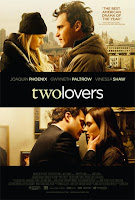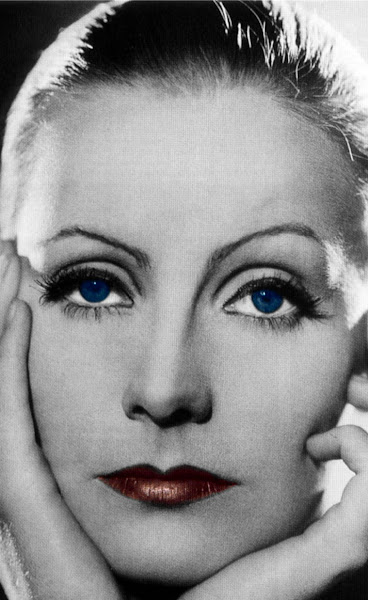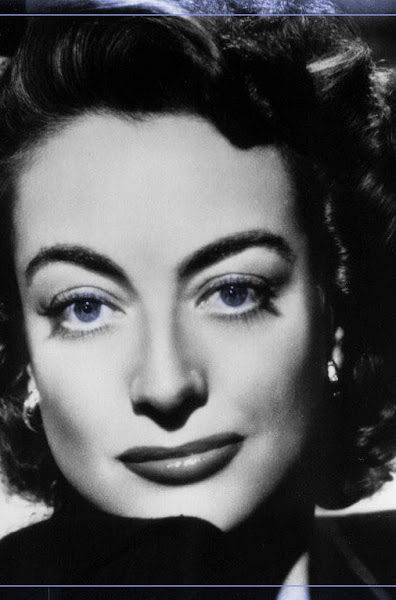
Happy anniversary! My blog is one year old today, as I announced last Thursday, so today is the day to unveil the new title! *drumroll* In 1942's "Now, Voyager," Bette Davis says, "Oh, Jerry, don't let's ask for the moon... we have the stars." The second half of this famous, memorable quote is going to become the new title of my blog! The stars refer to my weapons as a film critic, and the "we" indicates my participation in the film community. I might be a singular film critic, but as Jonathan Rosenbaum says, film criticism is very much a "social" activity.
Here's to another year of new film reviews, random musings, and quotes- and scenes-of-the day, etc., just for you! Cheers!
*NOTE: No need to press "read more" beyond this. Thank you.*
March 26, 2009
One Year Later!
March 25, 2009
I Love You, Man
 ** ½ out of ****
** ½ out of ****
In an age when Brody Jenner is searching for his new best friend by way of “bromance” on MTV, it should come as no surprise that Hollywood would eventually make a film based on this kind of distinctly heterosexual union between two buddies. The film is “I Love You, Man,” which, like “I Now Pronounce You Chuck and Larry,” also appropriates the idea of homosexual romance and twists it into heterosexual humor.
This film centers on Peter (Paul Rudd), a real estate agent who has just become engaged to Zooey (Rashida Jones) and realizes he has absolutely no groomsmen to match the bevy of female friends his fiancée espouses. He decides to ask his father (a well-cast J.K. Simmons) to be his “best man,” but he changes his mind after his father only indicates Peter’s gay brother (Andy Samberg from “SNL”) to be one of his two best friends (“Along with, Hank, of course,” Hank being a friend of thirty years). Thus, Peter decides to go on some “man-dates” to find a best friend who can ultimately become his “best man.” After his first few attempts to find real friends do not pan out, he gives up and throws himself into selling the mansion of Lou Ferrigno (who makes an amusing cameo). There, he meets an uncouth prospective client named Sydney (Jason Segel), only around for the delicious paninis and the attempts to hit on divorcées, who eventually becomes the buddy Peter never had—they both love fish tacos, walking "Anwar Sadat," Sydney's dog (apparently named so because of his striking resemblance to the former Egyptian president), and jamming to the music of Rush. Soon, however, the time Peter spends with Sydney starts to compromise his happiness with Zooey, putting a strain on their relationship just weeks before the wedding. Furthermore, when Sydney’s motives for befriending Peter become questionable, Peter is put in a bind. What is a “bro” to do?
“I Love You, Man” is probably the funniest commercial film since “Knocked Up,” and it is full of original jokes and wit certain to inspire fits of uncontrollable laughter (as you can glean from the plot alone). It seems as if, based on the beginning of the film, the humor will rely mostly upon crudeness, sex, and gross-outs, but eventually the film settles into itself. The humor becomes pleasantly and surprisingly hilarious because a good deal of it hinges on the main characters’ awkwardness. (One great thing about “I Love You, Man” is that all of the characters are fleshed out well.)
Paul Rudd makes an amusing main character who generates humor through his dependence on imitations of leprechauns (or things that apparently sound like leprechauns) and awkwardly constructed slang words (which fit the character so well that they almost seem ad-libbed on cue). However, he lacks the innate charm of other major comic actors, such as Seth Rogen, so he is ultimately overshadowed by co-star Jason Segel, who falls into the character of grungy, unconventional Sydney so well that his performance can best be described with a certain “je-ne-sais-quoi.” Anyone who can make normal the ensemble of a button-up shirt, swimming trunks, and Ugg boots while walking an Egyptian-named dog and growling in men’s faces like said dog is putting in a “tour-de-force” performance in my opinion.
Amusingly enough, this film reeks of Judd Apatow and Seth Rogen, but incidentally, neither has ever been involved with it. (A good deal of this misattribution likely rests upon the appearances of Paul Rudd and Jason Segel, both of whom appear in several of the films Apatow has produced and directed.) Nonetheless, the humor is very much in the vein of “The 40-Year-Old Virgin,” “Knocked Up,” and “Forgetting Sarah Marshall.” “I Love You, Man” is probably the best “buddy movie” in recent memory, and it depends heavily on its quotable one-liners, hilarious situations, and funny actors. For the 105 minutes “I Love You, Man” is onscreen, prepare to be entertained—the humor makes up for the film's lack of depth. It is not as if the Apatow films do not lack themselves either—all that matters is that you are laughing.
Originally published in the March 25 issue of Versus Magazine: Entertainment & Culture
March 19, 2009
A Change is Gonna Come...

Where did the title go? For you loyal readers, I shall remind you that after 121 posts, I am now about to finish my first year online! On March 26, my blog will have been a whole year old, so I think it is time to celebrate that year. To match the sophistication I think my blog and reviews have achieved in that time (especially in recent months), I want to make the title more sophisticated, as well. Although "Grimwood's Great Film Reviews" was sufficient enough so far, I do not want such a title to reflect any kind of intrinsic narcissism or poorly conceived naming anymore. Thus, on March 26th at 4:00 p.m., the time my site went online one year ago, you will see a brand new title on my blog. Get ready because it will be so much more interesting. Be there or be square.
*NOTE: No need to press "read more" beyond this. Thank you.*
In the News: Natasha Richardson

I only saw her act in one film, Disney's 1998 remake of "The Parent Trap," but I know her credits extend far beyond that one. In any case, the death of actress Natasha Richardson is a tragic one and certainly too soon for her young age of 45. (Her skiing accident-related death also recalls the death of Sonny Bono eleven years ago...) The following write-up on this respected actress' life is derived from the Associated Press/Yahoo! News (but paraphrased)...Tony-winning actress ("Cabaret") Natasha Richardson died Wednesday at Lenox Hill Hospital in Manhattan of a brain injury sustained Monday after falling on a ski slope in Quebec. Her accidental death, the result of bleeding between the skull and the brain's covering, has been ruled an accident. Richardson will likely become best-known for her work on Broadway ("Cabaret," "Closer," "Streetcar Named Desire"), but she was also a film actress, playing roles in "Patty Hearst," "The Comfort of Strangers," "Nell," and the 1998 Disney remake of "The Parent Trap." Richardson was born in London in 1963 to Oscar-winners Vanessa Redgrave and Tony Richardson. She was the grandchild of Oscar-nominee Michael Redgrave and stage/film actress Rachel Kempson. She leaves behind her husband, Oscar-nominee Liam Neeson, two sons, Micheál and Daniel, and a sister, actress Joely Richardson.
Farewell, Natasha. You will be missed.
March 18, 2009
Two Lovers
 * ½ out of ****
* ½ out of ****
“Two Lovers” is a significant film because it features what actor Joaquin Phoenix is calling his “last film role” as he goes off to pursue a career in rap music. This fact is about all that is significant about “Two Lovers.”
The story concerns a young bipolar man (Phoenix) who lives with his “émigré” parents in New York City and works for their dry cleaning business after his fiancée leaves him. Eventually, he meets his “lovers”: the nice Jewish woman his parents want him to marry (Vinessa Shaw) and the mysterious “shiksa” who lives in the same building (Gwyneth Paltrow). This plot might sound intriguing, but it all comes off rather tepidly. It is a drama, but not quite the romance the title implies and certainly not passionate (in many respects). The dialogue is flat, banal, and unconvincing and spoken by actors who, though well-known, are overwhelmingly unimpressive. However, the appearance of Isabella Rossellini is always quite a treat (she even shares the strikingly soft features of her mother, Ingrid Bergman, these days) and here she plays the mother of Leonard (Phoenix), but it hardly makes up for the oil-and-vinegar onscreen chemistry of Leonard, Michelle (Paltrow), and Sandra (Shaw). (Even Jack Black and Gwyneth Paltrow had better chemistry in “Shallow Hal”!) I found myself wondering several times why Joaquin Phoenix even has the titular two lovers because he lacks palpable sex appeal in the film. Though something of a method actor, his approach to Leonard is generally awkward and uninteresting. (What a dud for “Going out with a bang.”)
Vinessa Shaw is perhaps the best actor in the film playing the most sympathetic character. She accurately personifies simple, normal Sandra with unglamorous charm. Sandra, though not as beautiful and more ordinary in comparison to Michelle, is selfless and pleasant. On the other hand, Gwyneth Paltrow, for whom the role of Michelle was written (according to imdb.com), delivers a performance about which I am indifferent—so indifferent that I really have little to say about it.
The filmmaking is pretty unforgivable because director James Gray’s fourth directorial effort comes off as amateur and uneven film school fodder. Though the subject material may be cliché (woman falls in love with married man who will not leave his family; man has unrequited love for woman), it might have held up as melodrama had the acting not been so lackluster and the dialogue so trite. Nevertheless, the plot drive is choppy and generally insipid. It has shining moments, but those only occur when the acting does become effective. In other parts, the story grows oppressively tedious. Meanwhile, the film’s choppiness also becomes apparent by way of the camera. The cinematography at the beginning of the film presents tight framing that leaves some visual information hidden, confusing viewers, but this curiously makes interpreting what is going on much more interesting and pertinent. However, this different approach at visual storytelling seems quickly abandoned in favor of a conventional one (the camera as an invisible narrator), which is quite unsatisfying in light of the approach at the beginning of the film.
Because of the general lifelessness of the film’s visuals, story, and acting, I contemplated leaving the theater several times because walking anywhere would have been more interesting. (I rarely seriously consider such things, by the way.) As a word of warning, if you are searching for the grand love story on par with “Casablanca,” then stay home—romancing any kind of stone would be more fulfilling.
Originally published in the March 18 issue of Versus Magazine: Entertainment & Culture
March 11, 2009
Watchmen
 **** out of ****
**** out of ****
It should come as no surprise that the mid-80s DC Comics maxi-series that redefined the medium of comic books would later become the film that would (re-)revolutionize the superhero genre. Hot on the heels of last summer’s epic blockbuster, “The Dark Knight,” “Watchmen” may actually eclipse it in terms of visual style, plausible narrative drive, and density. Though “The Dark Knight” is notably more elaborate than most “superhero movies,” incorporating the feel of a crime drama, “Watchmen” has a more stylized look, like a colorized version of “Sin City,” but also embracing “a bit of the old ultra-violence” and philosophy of Kubrick’s “Clockwork Orange.” While the conflicts in “The Dark Knight” seem created at will to keep the film moving, the conflict of “Watchmen” builds slowly into a mind-blowing climax. If “The Dark Knight” was almost perfect, “Watchmen,” supported by the brilliant original story by Alan Moore (who requested to be uncredited) and Dave Gibbons and sharp direction of Zack Snyder (“300”), is a masterpiece.
But it was a masterpiece that almost never saw the light of day. “Watchmen” festered in “development hell” for twenty years, falling into the hands of several studios, screenwriters, and directors before finally settling into Warner Bros. with Snyder at the helm. While others had tried to interpret “Watchmen” in different times and settings with occasionally different events, Snyder emphasized integrity to the original comic book series and made, for all intents and purposes, a faithful adaptation. The story remains the same—former non-powered, costumed adventurers find themselves being killed off one by one while the world hinges on the brink of nuclear destruction in a Cold War-ridden alternate 1985. Snyder tweaks things here and there, though. He removes the “Under the Hood” texts and the vignette “Tales of the Black Freighter” but does allude to them briefly, and he cleverly streamlines the story of the first team of heroes, the Minutemen, by a montage of alternate American history in the credit sequence. Otherwise, he adapts the comic book—often word-for-word and image-by-image—to the screen. Putting a comic book on the screen could cause the story to retain the two-dimensional feel, but “Watchmen” is far from flat. It lives because Snyder realizes that film is a medium all its own, just like comic books, so he uses the specific powers of film to make the story even more visually real and compelling. For example, the film’s climax (of which you “Watchmen” readers are well aware) made me feel literally suffocated, whereas the images from the comic book were striking but unaffecting. In general, a good deal of the (literally) graphic, violent images of the comic book transferred with unprecedented intensity to the screen.
Meanwhile, whoever chose to steer clear of the “big names” in casting made an excellent choice. Jude Law, Tom Cruise, and Keanu Reeves had all, at one point, been attached to the film in its various stages of development, but thankfully, a casting director realized “the star system” would be too heavy for “Watchmen,” detracting from its unbelievably complex story. All of the main actors personify their characters well, but the real star of the film is Jackie Earle Haley as Rorschach. If the Academy is going to nominate and endow Heath Ledger with an Oscar for his work as the Joker in “The Dark Knight,” then they must consider Haley for his work. Though hidden under his mask for most of the film, Haley embodies the mysterious, shrewd detective so well that his performance frighteningly reproduces the character. He effaces emotion, but he contains it, as he is sickened by the morally devoid world around him. (Moral ambiguity festers from start to finish in “Watchmen,” and the horrifying conclusion rests on this potent theme.) The computer-animated blots on Rorschach’s mask are a nice touch on the part of visual effects—they help viewers (attempt to) read him even if they cannot see his face. Anyway, the performance is seamless and anyone would be hypocritical to recognize Ledger's contribution to a “superhero movie” without acknowledging Haley's equally admirable work.
Interpreting this “superhero movie” on a greater scale, the whole genre can never again be snubbed or rebuffed as amateur. “The Dark Knight” was the herald, but “Watchmen” is the tower. “Watchmen” transforms the laughable “hero saves the world with no real story” film (a.k.a. “X-Men”) into a masterpiece of visual, narrative, psychological, and philosophical sharpness. “Watchmen” is going to be loved, first and foremost, by the fans of the comic book series/graphic novel. However, this does not mean that the film itself (all 163 minutes) is incapable of being digested by people new to the story. The fights would at least capture the interest of action film junkies, and the story still has bite in today’s post-9/11 world. The film is brutally graphic, but the visuals are so alive that they pack more wallop than even that pencil scene from the “The Dark Knight” did. Again, if you thought “The Dark Knight” was something to see, then you should see “Watchmen.”
Originally published (in abridged form) in the March 11 issue of Versus Magazine: Entertainment & Culture

.jpg)

.jpg)
.jpg)
